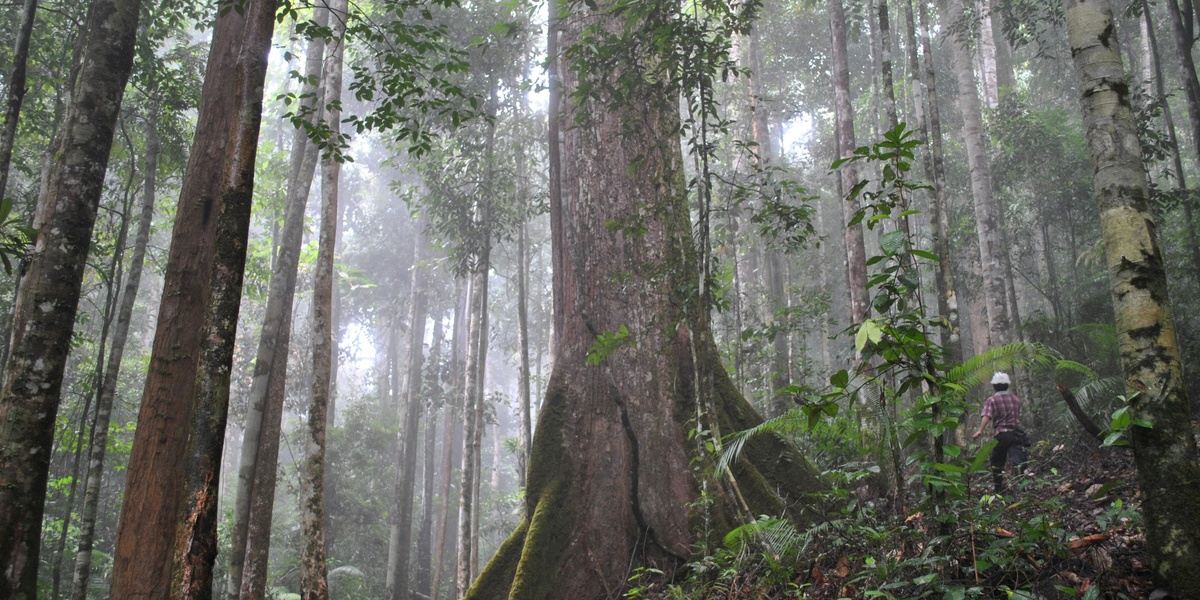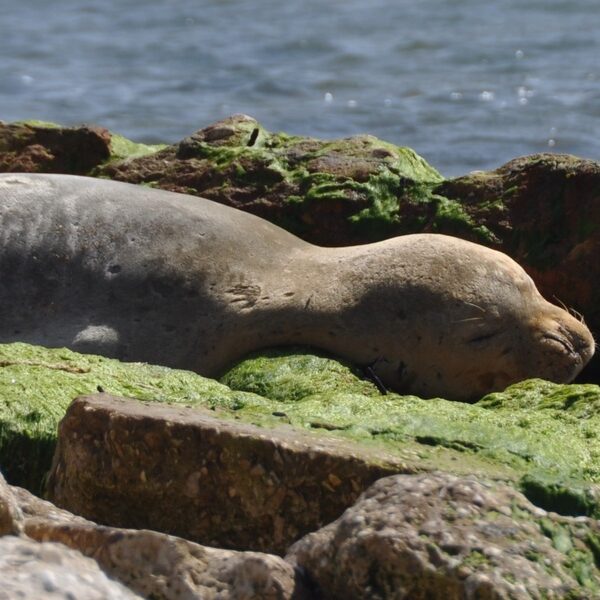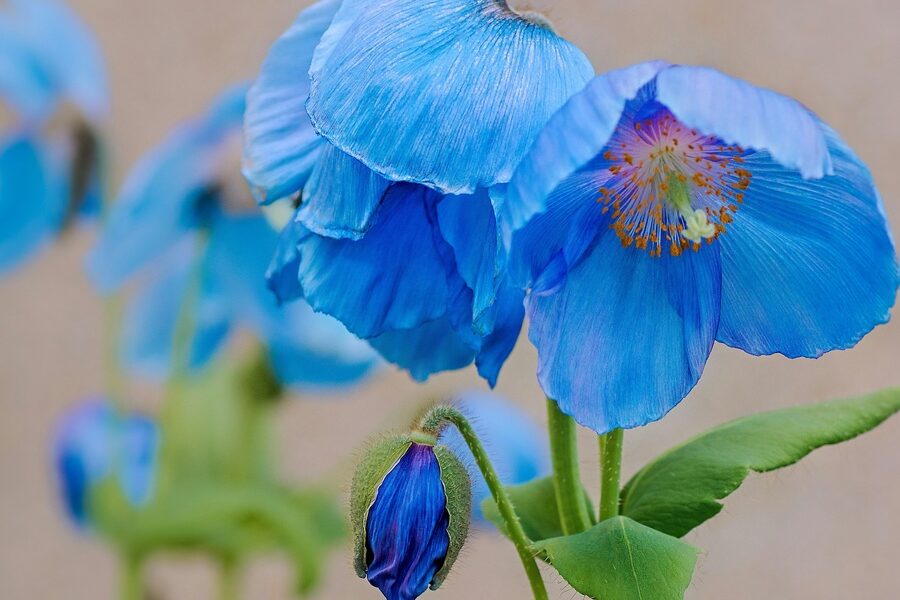Cambodia’s landscapes—from Tonle Sap floodplains to temple groves and urban avenues—hold a wide mix of native and planted trees that shape daily life, crafts and wildlife habitats. Knowing which species grow where helps with conservation, timber use and simple curiosity on a walk or visit.
There are 42 Trees of Cambodia, ranging from Agarwood,Ylang-Ylang. For each species you’ll find below the columns: Scientific name,Typical height (m),Range in Cambodia, along with brief notes to aid identification and local uses—you’ll find below.
How can I use this list to identify trees in the field?
Match observable features (leaf shape, bark, flowers) to the Scientific name and Typical height (m) columns, then check the Range in Cambodia to see if that species occurs locally; carrying photos or a printed extract and focusing on a few distinctive traits speeds identification.
Are these species native or introduced to Cambodia?
The list covers both native and naturalized trees—use the Range in Cambodia entry to gauge whether a species is wild, regionally common, or mostly planted; local forestry offices or botanical gardens can confirm origin for specific entries.
Trees of Cambodia
| Common name | Scientific name | Typical height (m) | Range in Cambodia |
|---|---|---|---|
| Siamese Rosewood | Dalbergia cochinchinensis | 25 | Northern and eastern plains, in dry deciduous forests |
| Palmyra Palm | Borassus flabellifer | 20 | Widespread in lowland plains and cultivated areas, especially around villages |
| Teak | Tectona grandis | 35 | Mixed deciduous forests, now common in plantations |
| Ta-khian | Hopea odorata | 40 | Lowland evergreen forests, often near rivers |
| Agarwood | Aquilaria crassna | 20 | Cardamom Mountains and other forested regions |
| Burma Padauk | Pterocarpus macrocarpus | 25 | Dry and mixed deciduous forests throughout the country |
| Giant Crape-myrtle | Lagerstroemia speciosa | 25 | Along rivers and in moist lowland forests |
| Kapok Tree | Ceiba pentandra | 45 | Widespread in lowlands and settled areas |
| Asian Dipterocarp | Dipterocarpus alatus | 40 | Lowland evergreen and semi-evergreen forests across the country |
| Freshwater Mangrove | Barringtonia acutangula | 12 | Seasonally flooded forests, especially around the Tonle Sap lake |
| White Meranti | Shorea roxburghii | 30 | Common in lowland dry evergreen and deciduous forests |
| Makha Tree | Afzelia xylocarpa | 30 | Dry deciduous forests of the northern and eastern plains |
| Ironwood | Xylia xylocarpa | 25 | Throughout dry deciduous and mixed forests |
| Tamarind | Tamarindus indica | 20 | Widely naturalized in lowlands and cultivated areas |
| Mango | Mangifera indica | 25 | Cultivated and naturalized throughout the country in lowland areas |
| Jackfruit | Artocarpus heterophyllus | 15 | Commonly grown in villages and home gardens across the country |
| Durian | Durio zibethinus | 30 | Cultivated in southern provinces like Kampot and Kampong Cham |
| Bodhi Tree | Ficus religiosa | 25 | Commonly planted at temples and pagodas nationwide |
| Rumdul | Mitrella mesnyi | 10 | Widespread in lowland areas, often planted in gardens |
| Sumatran Pine | Pinus merkusii | 30 | Restricted to the Kirirom Plateau and other highland areas |
| Red Mangrove | Rhizophora mucronata | 15 | Coastal mangrove forests, especially in Koh Kong province |
| Cajeput Tree | Melaleuca cajuputi | 20 | Seasonally wet areas, swamp forests, and along coastal plains |
| Red Silk-Cotton Tree | Bombax ceiba | 30 | Lowland deciduous forests and village commons |
| Golden Shower Tree | Cassia fistula | 15 | Widely planted as an ornamental tree in towns and gardens |
| Coconut Palm | Cocos nucifera | 25 | Abundant along the coast and widely planted in lowlands |
| Neem | Azadirachta indica | 18 | Common in dry zones and widely planted in villages |
| Ylang-Ylang | Cananga odorata | 20 | Naturalized in lowland areas and grown in gardens |
| Rain Tree | Samanea saman | 25 | Widely planted in parks and along roadsides for shade |
| Indian Almond | Terminalia catappa | 25 | Common in coastal areas and planted as a shade tree |
| Indian Jujube | Ziziphus mauritiana | 12 | Dry, scrubby areas and cultivated lowlands |
| Burmese Grape | Baccaurea ramiflora | 15 | Found in evergreen forests and often cultivated for its fruit |
| Siris Tree | Albizia lebbeck | 20 | Widespread in lowlands, often found in disturbed or open areas |
| Rubber Tree | Hevea brasiliensis | 25 | Extensive plantations, especially in the eastern provinces |
| Stink Bean | Parkia speciosa | 20 | Evergreen forests, also cultivated in home gardens |
| Indian Cork Tree | Millingtonia hortensis | 20 | Commonly planted as an ornamental tree in towns and pagodas |
| Banyan Tree | Ficus benghalensis | 25 | Widespread, often near villages and religious sites |
| Siamese Sindora | Sindora siamensis | 25 | Dry deciduous forests, particularly in the north and east |
| Mersawa | Anisoptera costata | 45 | Lowland evergreen and semi-evergreen forests |
| Dog Teak | Dillenia pentagyna | 15 | Moist deciduous forests and grasslands |
| Beechwood | Gmelina arborea | 20 | Deciduous forests and widely used for reforestation projects |
| Wild Almond | Irvingia malayana | 35 | Lowland evergreen rainforests |
| Trumpet Flower Tree | Stereospermum fimbriatum | 18 | Mixed deciduous forests and limestone hills |
Images and Descriptions

Siamese Rosewood
A critically endangered species famed for its dark, dense, and fragrant heartwood. Over-harvesting for the luxury furniture trade has decimated wild populations, making it extremely rare.
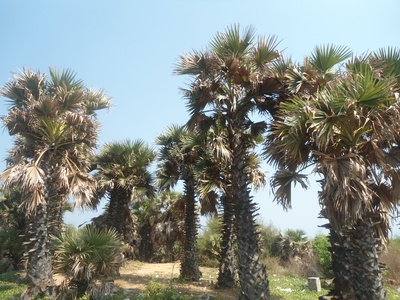
Palmyra Palm
Cambodia’s national tree, recognizable by its fan-shaped leaves and tall, straight trunk. The sap is used to make palm sugar, and the fruit is a popular snack.
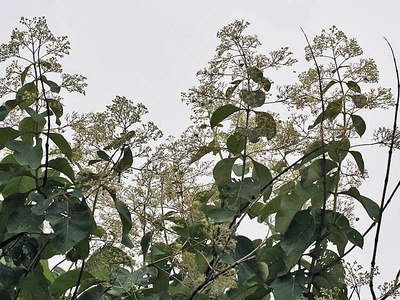
Teak
A world-renowned timber tree known for its durable, water-resistant wood. It has very large, papery leaves and is a key species in both forestry and natural ecosystems.

Ta-khian
A large, impressive hardwood tree producing valuable, durable timber used for boats and construction. It is considered a sacred tree in local folklore, believed to be inhabited by spirits.
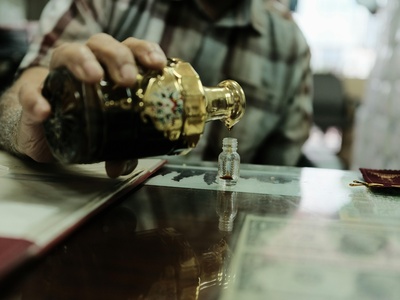
Agarwood
Famous for producing valuable, aromatic resin (oud) in its heartwood when infected with fungi. This has led to severe over-harvesting, making it critically endangered in the wild.

Burma Padauk
A valuable timber tree with reddish, durable wood resistant to termites. It produces beautiful, fragrant yellow flowers and is also used in traditional medicine.

Giant Crape-myrtle
Known for its stunning, large clusters of pink to purple flowers that bloom in summer. The wood is moderately durable, and various parts are used in traditional herbal remedies.

Kapok Tree
A massive tree with a buttressed trunk, famous for the silky cotton-like fiber (kapok) in its seed pods. The fiber is used for stuffing pillows and life jackets.

Asian Dipterocarp
A towering canopy tree, source of an oily resin (keruing oil) used for torches and waterproofing boats. Its two-winged fruits spin like helicopters as they fall from the canopy.

Freshwater Mangrove
A key species of Cambodia’s flooded forests, adapted to survive months of submersion. It produces long, drooping clusters of beautiful red flowers, often pollinated by bats at night.
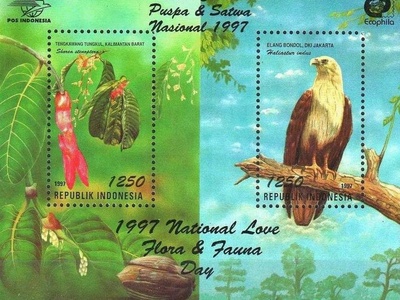
White Meranti
A large dipterocarp tree valued for its light hardwood timber, used in general construction. It has a straight trunk and is an important component of Cambodia’s forest ecosystems.

Makha Tree
Produces a highly sought-after, durable, reddish-brown timber with a beautiful grain. The large, woody pods contain black seeds with a distinctive bright red or orange aril.

Ironwood
Named for its extremely hard and heavy wood, which is very durable and resistant to termites. The wood is used for heavy construction, railway ties, and bridges.

Tamarind
Known for its fruit pods containing a sweet and sour pulp used widely in Khmer cuisine. This slow-growing tree provides excellent shade with its dense, feathery foliage.
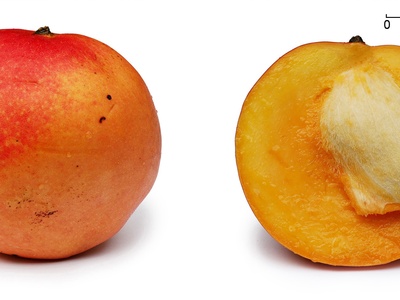
Mango
One of Cambodia’s most popular fruit trees, producing delicious mangoes. The tree is large, long-lived, and provides excellent shade, making it a common sight in villages and home gardens.
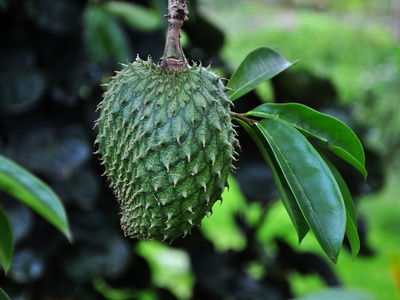
Jackfruit
Famous for producing the world’s largest tree-borne fruit, which can weigh up to 35 kg. The sweet, yellow fruit segments are a popular snack, and the wood is also useful.
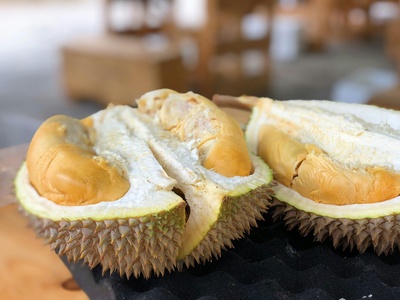
Durian
Known as the “king of fruits,” famous for its large size, thorny husk, and pungent aroma. It has a creamy, custard-like flesh that is highly prized by many.

Bodhi Tree
A sacred fig tree in Buddhism, recognizable by its heart-shaped leaves with a long, dripping tip. It provides deep shade and is a symbol of enlightenment and peace.

Rumdul
Cambodia’s national flower. It is a small tree or large shrub with fragrant, pale yellow-green flowers. The scent is especially potent in the evening, and its small fruits are edible.
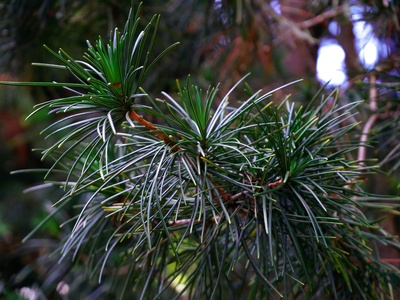
Sumatran Pine
One of the few pine species native to the tropics. It forms unique pine forests in specific Cambodian highlands and is a source of resin and timber.
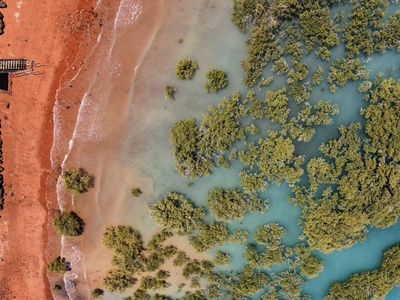
Red Mangrove
A key mangrove species identified by its extensive network of arching prop roots. These roots help stabilize coastlines, trap sediment, and provide a critical habitat for marine life.

Cajeput Tree
Identifiable by its white, papery, peeling bark. Its leaves are the source of cajuput oil, an essential oil with antiseptic properties used in traditional medicine and aromatherapy.
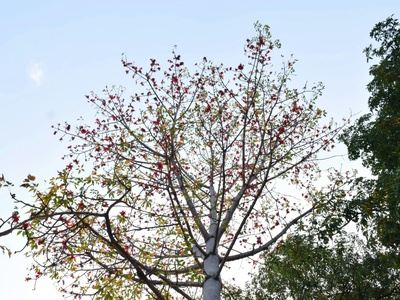
Red Silk-Cotton Tree
A spectacular tree with a spiny trunk that produces large, waxy red flowers in the dry season before the leaves appear. The seed pods contain a silky fiber similar to kapok.
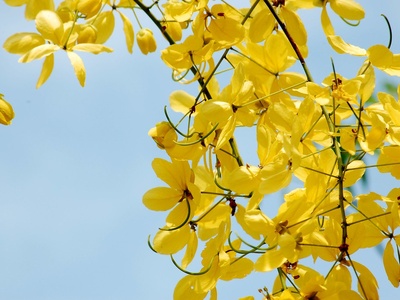
Golden Shower Tree
Famous for its stunning, long, drooping clusters of bright yellow flowers that resemble a golden rain. The tree’s long, dark seed pods are also a distinctive feature.

Coconut Palm
An iconic tropical palm tree providing a multitude of resources, including coconut water, milk, flesh, and oil from its fruit. The fronds and wood are also used for construction.
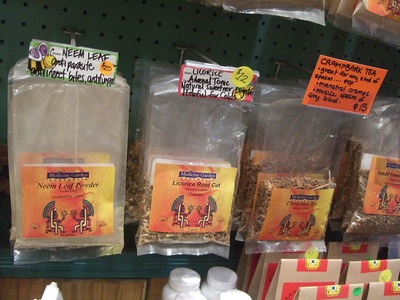
Neem
A fast-growing, hardy tree known for its medicinal properties. Its leaves, seeds, and oil have natural insecticidal and antiseptic qualities, making it a “village pharmacy” tree.
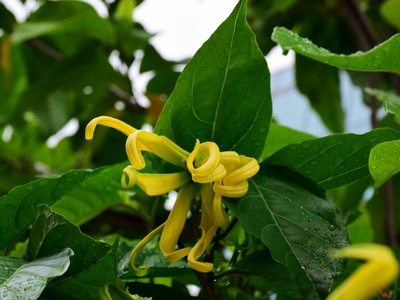
Ylang-Ylang
The source of the intensely fragrant ylang-ylang flowers, which are distilled to produce an essential oil for the perfume industry. It’s a fast-growing tree with drooping, leafy branches.

Rain Tree
A massive, wide-canopied tree known for its leaves that fold up at night or on cloudy days. It provides excellent shade and is a common feature in urban landscapes.

Indian Almond
A distinctive tree with a pagoda-like branching structure. Its leaves turn bright red or yellow before falling, and the edible seed inside the fruit tastes like an almond.
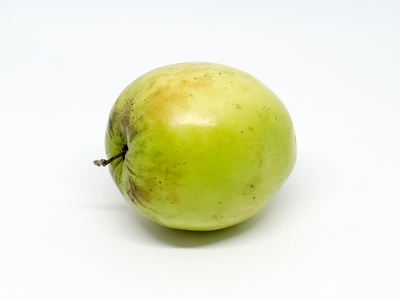
Indian Jujube
A spiny, small to medium-sized tree that produces a small, round, edible fruit. The fruit tastes like a crisp, sweet-tart apple and is a popular snack.

Burmese Grape
A small tree that bears clusters of round, yellowish-pink fruit directly on its trunk and main branches. The fruit has a sweet and sour taste and is popular locally.
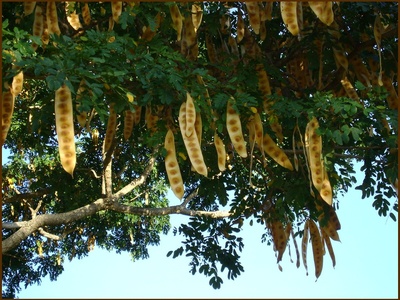
Siris Tree
A fast-growing, spreading tree with feathery, mimosa-like leaves. It produces fragrant, fluffy, cream-colored flowers and has long, flat, papery seed pods that rattle in the wind.
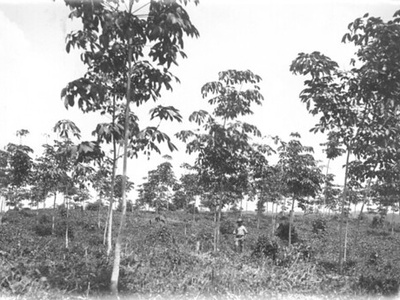
Rubber Tree
The primary source of natural rubber. This tree is economically vital to Cambodia, cultivated in vast plantations where latex is harvested by tapping the bark.

Stink Bean
Known for its long, twisted pods containing bright green, edible beans. The beans have a unique, strong smell and flavor and are a prized ingredient in Southeast Asian cuisine.
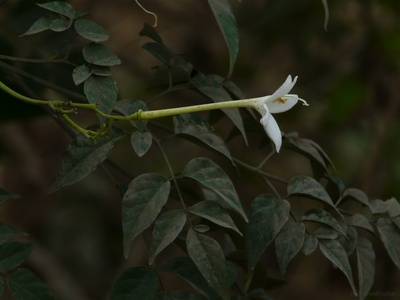
Indian Cork Tree
A tall, straight tree with fragrant, white, trumpet-shaped flowers that bloom at night. The bark is corky, giving the tree its common name.
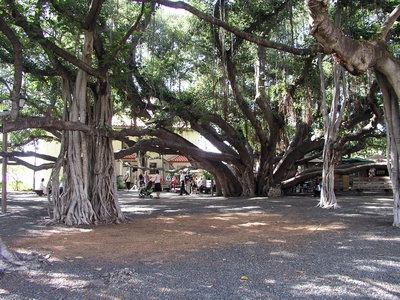
Banyan Tree
A massive fig tree known for its ability to spread over a wide area using aerial prop roots. These roots grow down from branches, forming thick, woody trunks over time.

Siamese Sindora
A leguminous tree known for its distinctive, spiny, woody seed pods. The timber is used locally, and the tree is an important part of its dry forest habitat.

Mersawa
A large dipterocarp species that yields a light hardwood timber. It is an important canopy tree in primary forests, contributing significantly to the forest structure.

Dog Teak
A medium-sized tree with large, coarse leaves and yellow flowers that appear before the new leaves. The wood is not very durable but is used for temporary construction and fuel.

Beechwood
A fast-growing deciduous tree valued for its light, stable timber used for furniture, pulp, and light construction. It’s an important plantation species for its rapid growth.

Wild Almond
A large forest tree that produces a fruit resembling a small mango. The kernel is edible and a source of a fat similar to cocoa butter, used in food and locally made cosmetics.

Trumpet Flower Tree
Known for its beautiful, fragrant, trumpet-shaped flowers that are white with frilly-edged petals. The tree has a slender form and produces very long, thin seed pods.
